February can feel like a slow month in the garden, as winter drags on and spring is yet to arrive. But there’s lots you can do now to encourage spring growth, especially when it comes to pruning certain plants.
The key is to focus your efforts on summer-flowering species, as opposed to spring-blooming varieties. While spring blooms tend to grow on old wood from the previous year, summer flowers usually sprout from new growth and therefore rely on winter pruning to clear the way.
There’s lots of benefits to pruning plants, including removing any dead, dying or diseased foliage so that the plant can focus its energy on new growth. It can also be a useful way to control the size and shape of any fast-growing or sprawling species.
In February, you’ll want to target the following 5 plants to ensure vibrant summer blooms and minimize any disruption to the growing cycle. Here's how to step out into your yard and get your plants in good shape for the year ahead.
Top tips before you start pruning
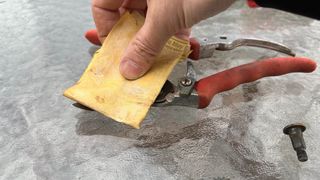
However, it’s critical that you don’t over-prune your plants, which can put the plant into stress. Pruning them at the wrong time can also be an issue, as cutting away branches and leaves too close to the flowering season can prohibit the plant from being able to flower at all that year.
What’s more, make sure you have one of the best pairs of pruning shears in your garden toolkit, and keep your pruning shears clean and sharp to avoid spreading disease or damaging the plants. And if in any doubt, air on the side of caution and prune less rather than more.
1. Hydrangeas
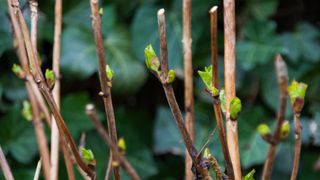
Hydrangeas are beloved for their large, rounded clusters of brightly colored flowers. Commonly found in shades of blue, purple, and pink, the shrub can be planted in the backyard or in containers and are relatively easy to maintain — but they do benefit from annual pruning.
There are several species of hydrangeas, but some of the most popular varieties flower on new wood in the summertime: Hydrangea paniculata and Hydrangea arborescens. This means that they will benefit from a late-winter pruning, which should prompt healthy new growth in time for the summer. Make sure to check which species you have in your garden, as mophead and lacecap varieties will require old wood to flower, otherwise you could be making a common hydrangea pruning mistake. You won’t kill the plant if you prune incorrectly, but you will likely see no blooms until the following year.
When pruning, focus on shaping the plant and removing any overly dense, diseased or dying branches. A healthy plant could end up producing an excess number of branches, which can clump together and create a congestion of foliage. By cutting away the extra branches before they bloom, you get a neater shape and increase air circulation, which reduces the risk of disease.
2. Clematis
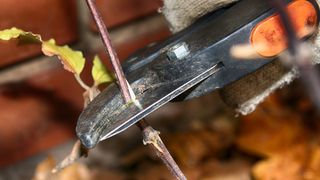
Clematis grows on a climbing vine and many varieties are chosen for the ability to add height and vertical interest to a garden – they are one of the best plants to grow on a wall or trellis. You can find clematis that grows up to 20 feet high, or opt for shorter varietals that will be content in smaller spaces. Because of this potential for such sprawling growth, pruning is critical in order to maintain some order and retain your desired shape. It will also help to keep the plant flowering healthily each year.
Determine your type
Clematis is favored for its attractive large blossoms that come in a range of vibrant colors from white to plum to lavender and even yellow. But, first, you must determine which of the three groups of clematis you have in your garden. Groups 2 and 3 are suited to February pruning, since they are summer flowering.
Depending on your specific clematis, your pruning will look different. Group 2 clematis can handle light pruning to control shape, but it grows on a mix of old and new wood so you should not prune too much as this could remove some of the new buds. Group 3 clematis, however, can be cut back more substantially to 30 inches above the ground, also known as “hard pruning,” since this plant prefers to flower on new growth. If you accidentally hard prune a group 2 clematis, the plant will recover — you just won’t see as many flowers that year.
3. Campsis (Trumpet Vine)
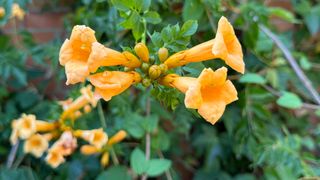
Similar to clematis, campsis — or trumpet vine — is a flowering vine that grows quickly and is, therefore, often used to make a dramatic statement across a trellis or wall. Instead of coming in the cooler tones of blue and purple, campsis is known for its warm blooms of red, orange or yellow, which help to create a more tropical feel.
It flowers in the summer on new growth, making it the perfect candidate for late winter pruning. And its fast-growing nature means you’ll want to hard prune this plant and cut down lateral shoots to only a foot or so in height, leaving only 3-4 buds. This ensures you will see blooms across the length of the plant, not just at the ends of the vines. The central vines that hold onto the trellis or other support structure can be left to maintain height.
If your trumpet vine is newer, you may need to be more ruthless with your pruning, cutting back the weaker shoots all the way to the ground. You will also likely need to do additional pruning in the autumn, after flowering, to encourage better growth in the spring. This increases the likelihood of strong shoots that can be trained up the trellis; while you’ll want to cut back the others.
4. Butterfly Bush
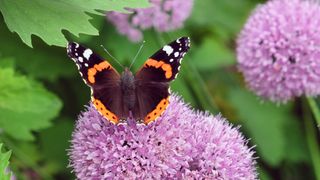
Although not a vine, the butterfly bush is still fast-growing and needs to be regularly pruned in order to keep its neat shape. Also known as buddleia, this is one of the plants that attracts butterflies and pollinators and it produces distinctive, large, conical clusters of flowers in vibrant colors, which will grow out from all sides of the bush if well-pruned. If left untended, this growth can end up concentrating at the top of the bush, resulting in an uneven and less attractive look.
Pruning the plant regularly will help to promote consistent flowering across the butterfly bush and keep any sprawling foliage in check. Not only will you want to target dying or diseased branches, but you should remove branches that cross or crowd together to ensure healthy, well-spaced foliage come the spring. As a general rule, you can cut quite a lot of the height away; many people recommend a height of a foot or so, in order to maximize spring growth and promote greater flowering.
One way to know exactly when and where to cut is to wait until the new growth begins to emerge in late winter. Since butterfly bushes flower on new growth, you can look for these shoots to signal which material needs to stay and what to prune away. In warmer climates, this should occur in February, but colder zones may need to wait until early March to see this active growth appear.
5. Rose of Sharon
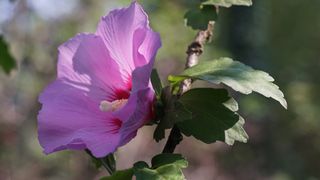
Rose of Sharon, despite its name, has blooms that are more similar in appearance to a hibiscus flower than the rose. This large shrub can grow over 10 feet high and wide, making it a statement species in any garden — and one that can benefit from some extra attention.
While rose of Sharon doesn’t require hard pruning, it can handle it if you need to control the shape and prefer a more compact shrub. One thing to keep in mind is that hard pruning will encourage your plant to grow fewer, larger blossoms, while lighter pruning will result in a higher volume of smaller flowers.
Older branches will often begin to curve and droop, which you may find attractive or you may prefer to remove. And, since rose of Sharon blooms in mid-late summer, you are safe to prune in February.
Begin by cutting back the oldest and tallest branches, which should help to contain the worst of the sprawl. When pruning, cut down to just one or two nodes on the branch first. You can remove entire branches if they appear weak or diseased, or if they are branching off in a strange direction. In these cases, you can cut back the plant to ground level without damaging the overall health of the plant.
These tips should help you on your way to getting your garden in shape this season!
More from Tom's Guide
- Discover 7 benefits of a wildlife garden and why you should grow one
- And how to get the best out of your pruning shears
- Plus, 7 mistakes everyone makes when deadheading plants
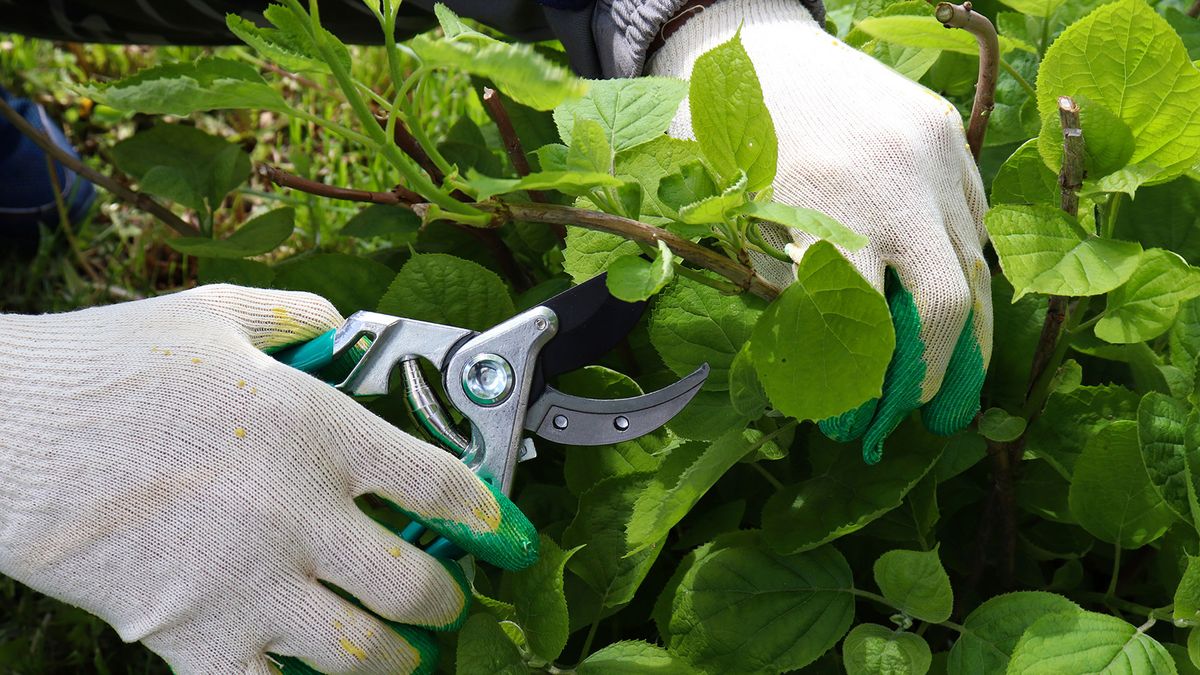




















 English (US) ·
English (US) ·